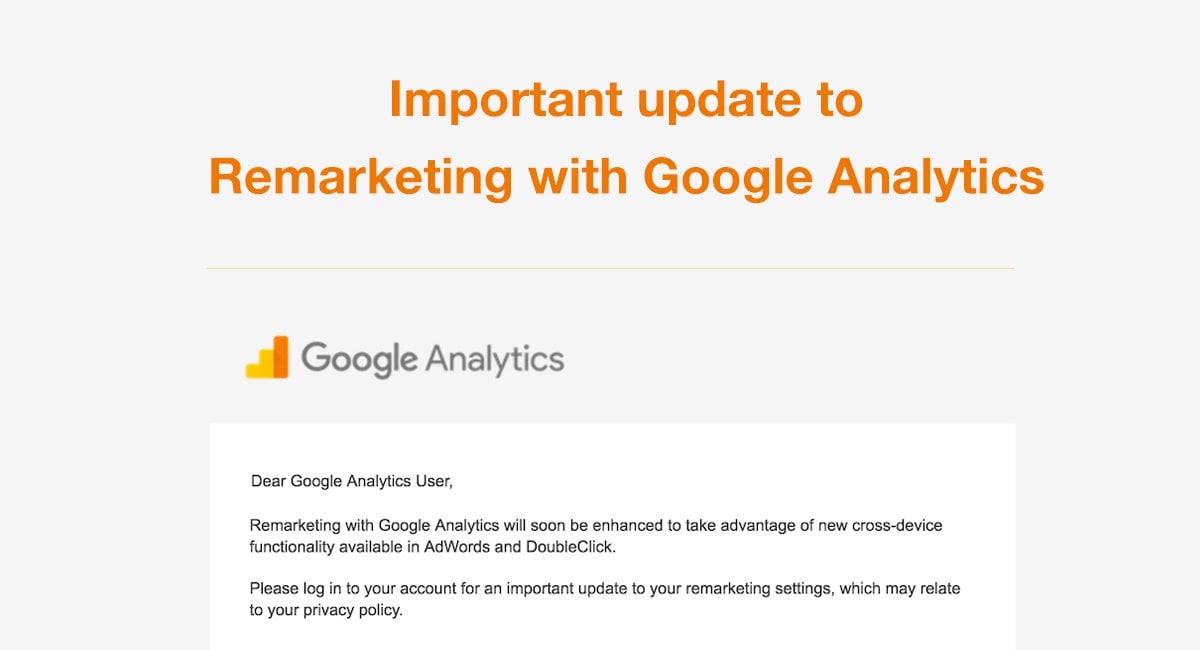Advanced Techniques for Remarketing In Google Analytics
Advanced Techniques for Remarketing In Google Analytics
Blog Article
Harnessing Remarketing in Google Analytics: A Comprehensive Guide
Using remarketing in Google Analytics uses businesses a tactical edge in getting to out to possible customers. This overview will shed light on the necessary steps involved in taking advantage of the complete potential of remarketing in Google Analytics, leading to boosted advertising and marketing results.
Understanding Remarketing in Google Analytics
Remarketing in Google Analytics enables companies to strategically target individuals who have formerly communicated with their internet site or mobile app. By leveraging data from Google Analytics, businesses can create personalized remarketing listings based upon user actions, such as pages visited, actions taken, or specific goals attained. This powerful tool makes it possible for organizations to re-engage with customers that have actually revealed interest in their services or products, eventually boosting the likelihood of conversion.
Understanding the various kinds of remarketing methods is essential for an effective project - What Is “Remarketing” In Google Analytics?. Google Analytics provides different choices, consisting of conventional remarketing, dynamic remarketing, and remarketing lists for search advertisements (RLSA) Each kind offers an one-of-a-kind purpose and can be tailored to satisfy particular marketing purposes
Moreover, assessing the performance of remarketing campaigns is necessary for optimizing results. Google Analytics offers beneficial insights right into the effectiveness of various remarketing methods, enabling businesses to make data-driven choices and improve their targeting method. By continually readjusting and keeping an eye on remarketing efforts based on analytics data, companies can optimize ROI and drive success in their advertising efforts.
Establishing Remarketing Campaigns

After establishing audience listings, the next step is to link Google Analytics with Google Ads. By linking these 2 platforms, organizations can seamlessly move audience lists from Google Analytics to Google Advertisements for remarketing functions. This assimilation permits even more accurate targeting and much better project efficiency.
When the accounts are connected, companies can develop remarketing projects in Google Ads making use of the audience provides formerly specified in Google Analytics. These campaigns can be customized with details advertisement creatives, messaging, and bidding process strategies to efficiently re-engage with past visitors and drive conversions. By adhering to these actions, businesses can leverage the power of remarketing to enhance their advertising initiatives and increase ROI.
Utilizing Audience Division Methods

Predefined sectors in Google Analytics allow you to swiftly analyze common audience groups like brand-new users, returning customers, or users who finished a certain objective on your web site. Custom-made sectors, on the various other hand, allow you to develop unique sections based upon details standards that are very important to your organization objectives. Dynamic remarketing checklists immediately readjust based upon user behavior, revealing personalized advertisements to individuals who have actually communicated with your site particularly methods.
Studying Remarketing Performance Metrics
Upon reviewing the effectiveness of remarketing campaigns in Google Analytics, the analysis of essential efficiency metrics supplies important insights into target market involvement and conversion rates. By delving right into metrics such as click-through prices (CTR), conversion rates, cost per procurement (CPA), and return on ad spend (ROAS), online marketers can determine the success of their remarketing efforts. Go Here Analyzing these metrics enables online marketers to optimize projects, fine-tune audience targeting, and allocate budgets efficiently to improve general remarketing efficiency.
Enhancing Remarketing Approaches
When refining remarketing techniques in Google Analytics, concentrating on audience division is vital for attaining imp source project success. By splitting your target market right into specific sectors based upon their habits, demographics, or interests, you can customize your advertisements better per team. This targeted technique raises the possibility of involving individuals who have actually already shown passion in your products or solutions, bring about higher conversion prices.
An additional vital facet of optimizing remarketing approaches is constantly screening and refining your campaigns (What Is “Remarketing” In Google Analytics?). A/B testing various advertisement creatives, messaging, or offers can aid you determine what resonates best with your audience and drives the most conversions. By assessing the efficiency of these tests in Google Analytics, you can make data-driven choices to maximize your remarketing initiatives even more
Furthermore, leveraging dynamic remarketing can substantially improve your project results. This function allows you to reveal individualized ads to individuals based upon their previous communications with your internet site, showcasing products or services they have previously watched. By delivering customized web content to customers based upon their passions and habits, dynamic remarketing can aid increase interaction and drive conversions.
Final Thought
In conclusion, using remarketing in Google Analytics is a tactical technique to target individuals that have actually previously involved with an internet site. By producing personalized audience listings and using target market division approaches, services can optimize remarketing campaigns for increased conversion prices. Evaluating efficiency metrics and constantly enhancing approaches are important for maximizing the efficiency of remarketing efforts.
Google Analytics uses different choices, including standard remarketing, vibrant remarketing, and Read Full Article remarketing listings for search ads (RLSA)After establishing up audience lists, the next step is to connect Google Analytics with Google Advertisements. By linking these 2 systems, companies can seamlessly move target market checklists from Google Analytics to Google Advertisements for remarketing objectives.As soon as the accounts are linked, companies can produce remarketing campaigns in Google Ads using the target market provides previously defined in Google Analytics.When refining remarketing methods in Google Analytics, concentrating on audience division is extremely important for accomplishing project success.
Report this page